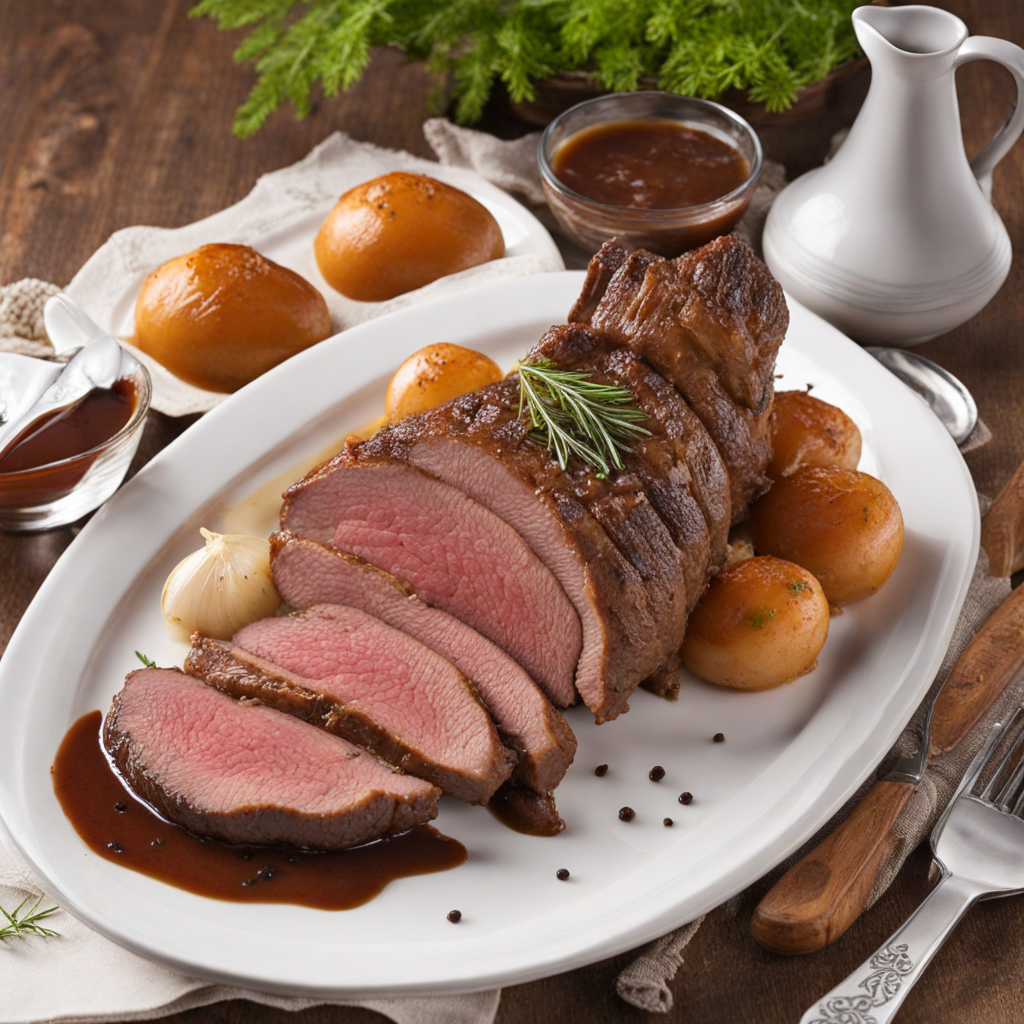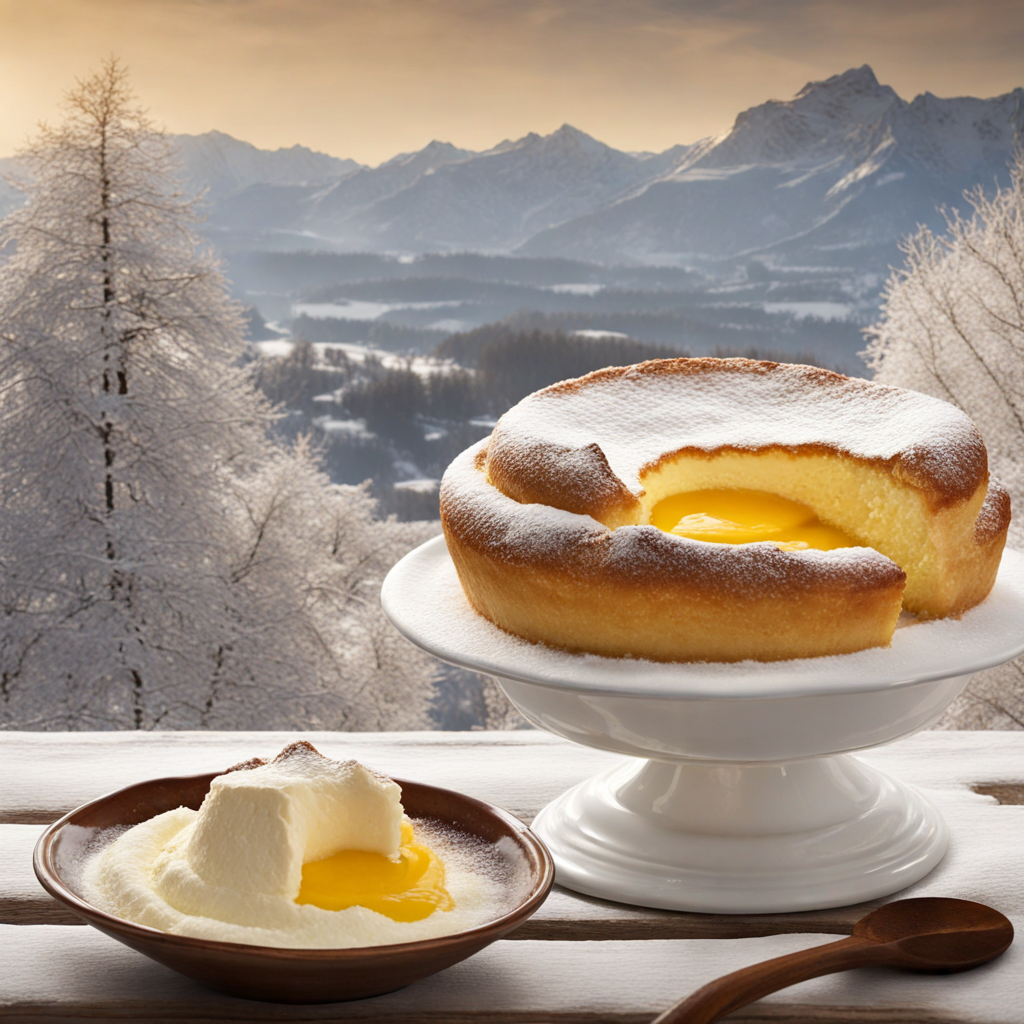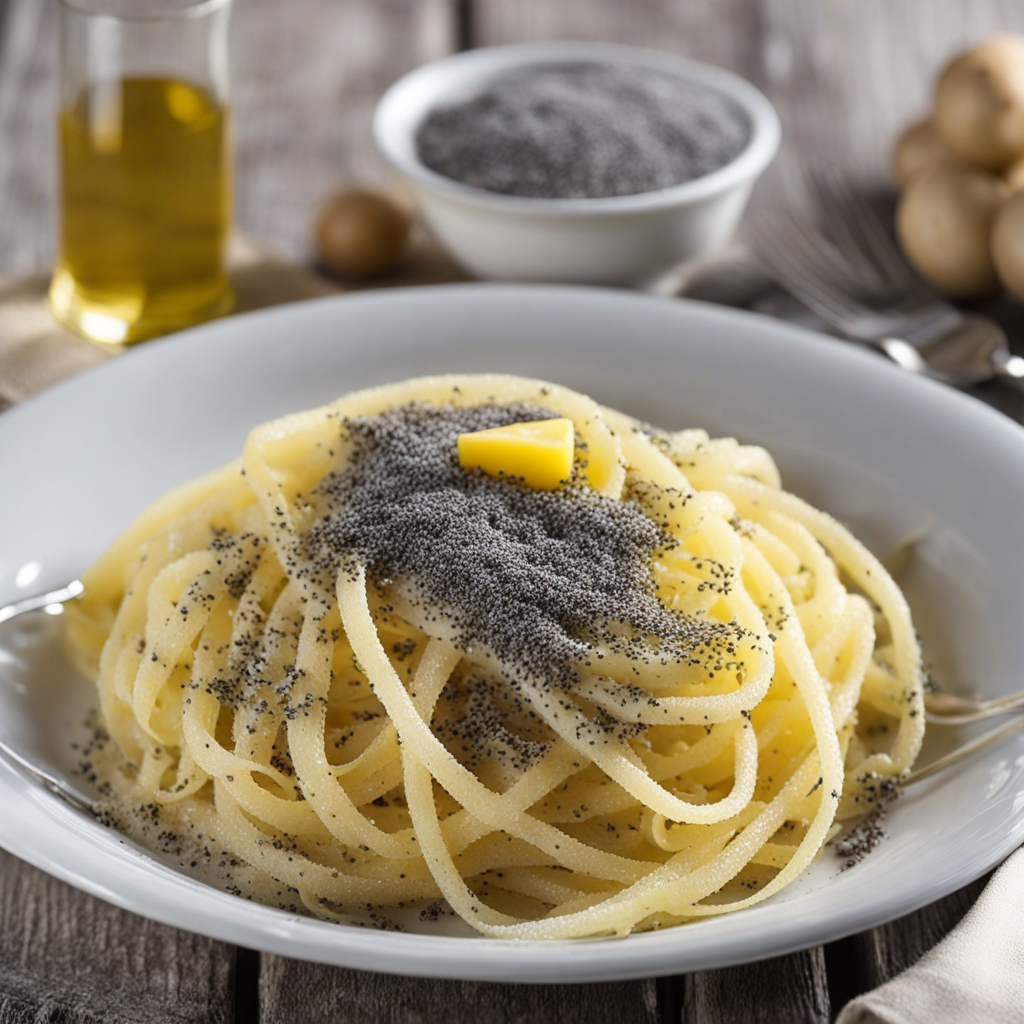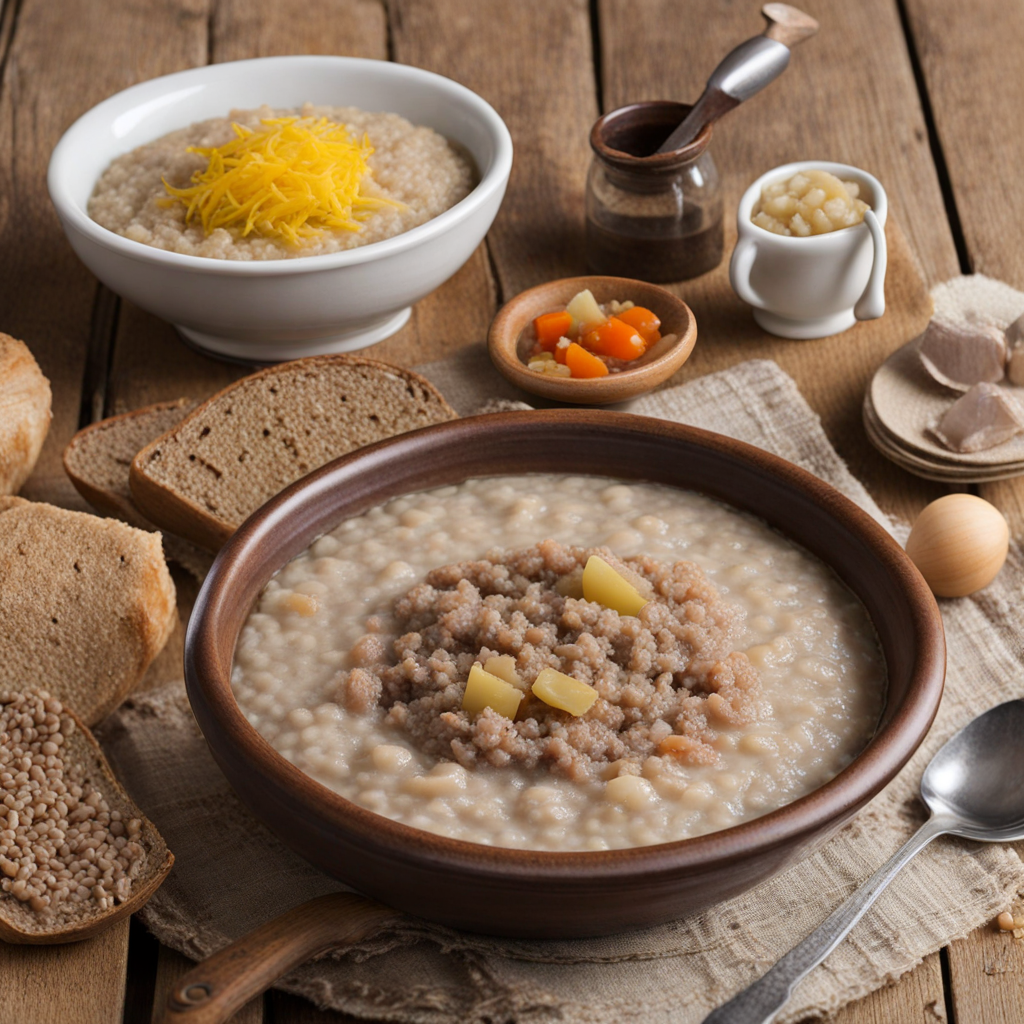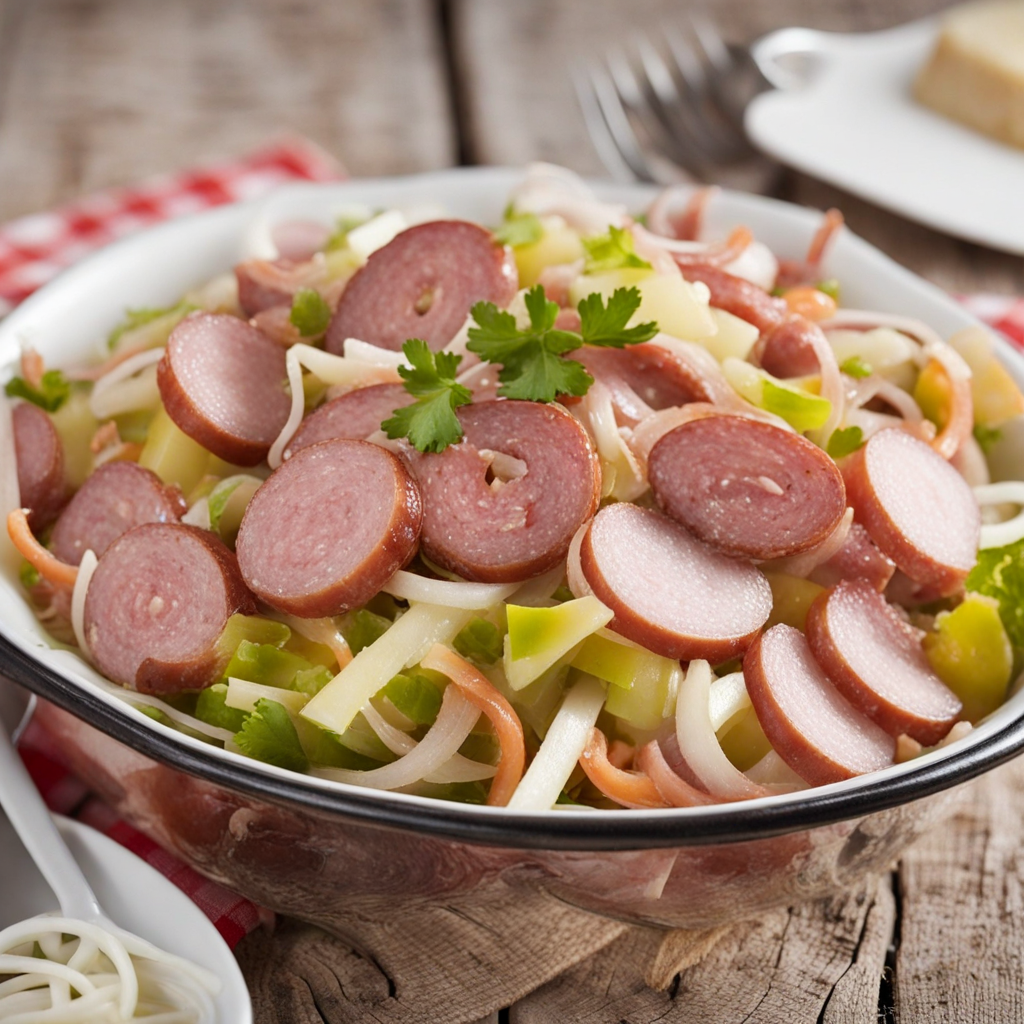Rostbraten
Rostbraten, a traditional Austrian dish, is a savory delight that embodies the rich culinary heritage of the region. This succulent roast beef is typically seasoned with a blend of aromatic herbs and spices, allowing the natural flavors of the meat to shine through. The dish is often slow-cooked, resulting in a tender, juicy texture that melts in your mouth. Often served with a flavorful gravy, Rostbraten is accompanied by a variety of side dishes, such as fluffy dumplings or creamy potato salad, which complement the hearty main course beautifully. One of the standout features of Rostbraten is the crispy crust that develops during the roasting process. This golden-brown exterior adds a delightful contrast to the moist interior, making each bite a satisfying experience. The use of high-quality beef, typically sourced from local farms, ensures that the dish is not only delicious but also supports sustainable practices. As you savor Rostbraten, you’ll notice the careful balance of flavors, with hints of garlic, thyme, and sometimes a touch of red wine, enhancing the overall depth of the dish. Rostbraten is often enjoyed during family gatherings or special occasions, making it a dish that brings people together. It embodies the warmth of Austrian hospitality and the love for hearty, home-cooked meals. As you explore this culinary gem, you'll discover the joy of indulging in a plate of Rostbraten, where each bite tells the story of tradition, flavor, and the rich agricultural landscape of Austria.
How It Became This Dish
The History of Rostbraten: A Culinary Tradition from Austria #### Origins and Early History Rostbraten, a quintessential dish of Austrian cuisine, reflects the rich tapestry of the region's culinary heritage. The term "Rostbraten" translates directly to "roasted meat" in German, and while the dish can refer to various types of roasted meats, it typically denotes a succulent beef roast, often prepared with a flavorful marinade and served with an array of accompaniments. The origins of Rostbraten can be traced back to the Middle Ages when roasting meat became a favored method of cooking in Europe. During this time, the nobility enjoyed elaborate feasts, and roasted meats were a centerpiece of these grand occasions. In Austria, the practice of roasting meat became a symbol of hospitality and abundance. The dish was likely influenced by the culinary traditions of neighboring regions, especially those of Germany and Hungary, where roasting meats over an open flame or in ovens was common. #### Cultural Significance Rostbraten is not merely a dish; it embodies the spirit of Austrian culture and the importance of communal dining. Historically, family and friends gathered around a table to enjoy a hearty meal, and Rostbraten was often the centerpiece of such gatherings. The dish is commonly prepared for special occasions, holidays, and Sunday dinners, symbolizing togetherness and celebration. In Austria, food is a significant aspect of its cultural identity, with each region boasting its own specialties. Rostbraten has become synonymous with comfort and home-cooked meals, evoking nostalgia for many Austrians who grew up savoring this dish. It also reflects the agricultural heritage of the country, where livestock farming has been a cornerstone of rural life. The availability of high-quality, locally sourced beef has contributed to the dish’s enduring popularity. #### Development Over Time As culinary techniques evolved over the centuries, so too did the preparation of Rostbraten. The traditional method of roasting meat has been refined, with advancements in kitchen technology and a greater understanding of flavor profiles. In the 19th century, the dish began to take on regional variations, influenced by local ingredients and culinary practices. In Vienna, for example, Rostbraten became associated with a specific style of preparation that included marinating the meat in a mixture of red wine, onions, and spices, resulting in a tender and flavorful roast. This preparation method became popularized in the culinary circles of the city and is still revered today. The emergence of the restaurant culture in the 19th century also played a significant role in the evolution of Rostbraten. Fine dining establishments began to feature the dish on their menus, showcasing the artistry involved in its preparation. Chefs experimented with garnishes, sauces, and side dishes to enhance the overall experience, leading to the creation of classic Austrian accompaniments such as dumplings, potato salad, and braised red cabbage. In the 20th century, as food trends shifted and globalization introduced new flavors and techniques, Rostbraten remained a steadfast symbol of Austrian cuisine. While some chefs began to incorporate international influences, the foundational elements of the dish—a perfectly roasted piece of beef, enhanced by fresh herbs and spices—remained intact. This culinary resilience has helped Rostbraten maintain its status as a beloved traditional dish. #### Modern Interpretations In contemporary Austrian cuisine, Rostbraten is celebrated not only in homes but also in restaurants that specialize in traditional Austrian fare. Many chefs take pride in using sustainably sourced, local ingredients, reflecting a growing movement toward farm-to-table dining. This emphasis on quality and authenticity ensures that the essence of Rostbraten remains alive and well. Modern interpretations of the dish often include creative twists, such as variations in the type of meat used (including pork or lamb), innovative marinades, and unique side dishes that draw inspiration from global cuisines. The rise of food festivals and culinary events dedicated to Austrian cuisine has further popularized Rostbraten, allowing chefs to showcase their skills and creativity while honoring this time-honored tradition. Additionally, the dish has found its way into the culinary consciousness of the international community. Food enthusiasts and travelers seeking authentic experiences are drawn to Rostbraten, often sharing their culinary adventures on social media, thus contributing to the dish’s growing popularity beyond Austrian borders. #### Conclusion Rostbraten stands as a testament to Austria's rich culinary history, embodying a blend of tradition, culture, and evolving taste. Its journey from medieval feasts to modern dining tables reflects the adaptability of Austrian cuisine and its ability to resonate with both locals and visitors alike. As culinary enthusiasts continue to explore the intricate flavors and techniques associated with Rostbraten, this beloved dish will undoubtedly remain a cherished staple of Austrian culture for generations to come. In a world increasingly driven by fast-paced lifestyles, Rostbraten serves as a reminder of the importance of slow cooking, communal dining, and the joy of sharing a meal with loved ones. Whether enjoyed in a cozy Austrian kitchen or an upscale restaurant, Rostbraten encapsulates the essence of hospitality, warmth, and the enduring power of food to bring people together.
You may like
Discover local flavors from Austria


